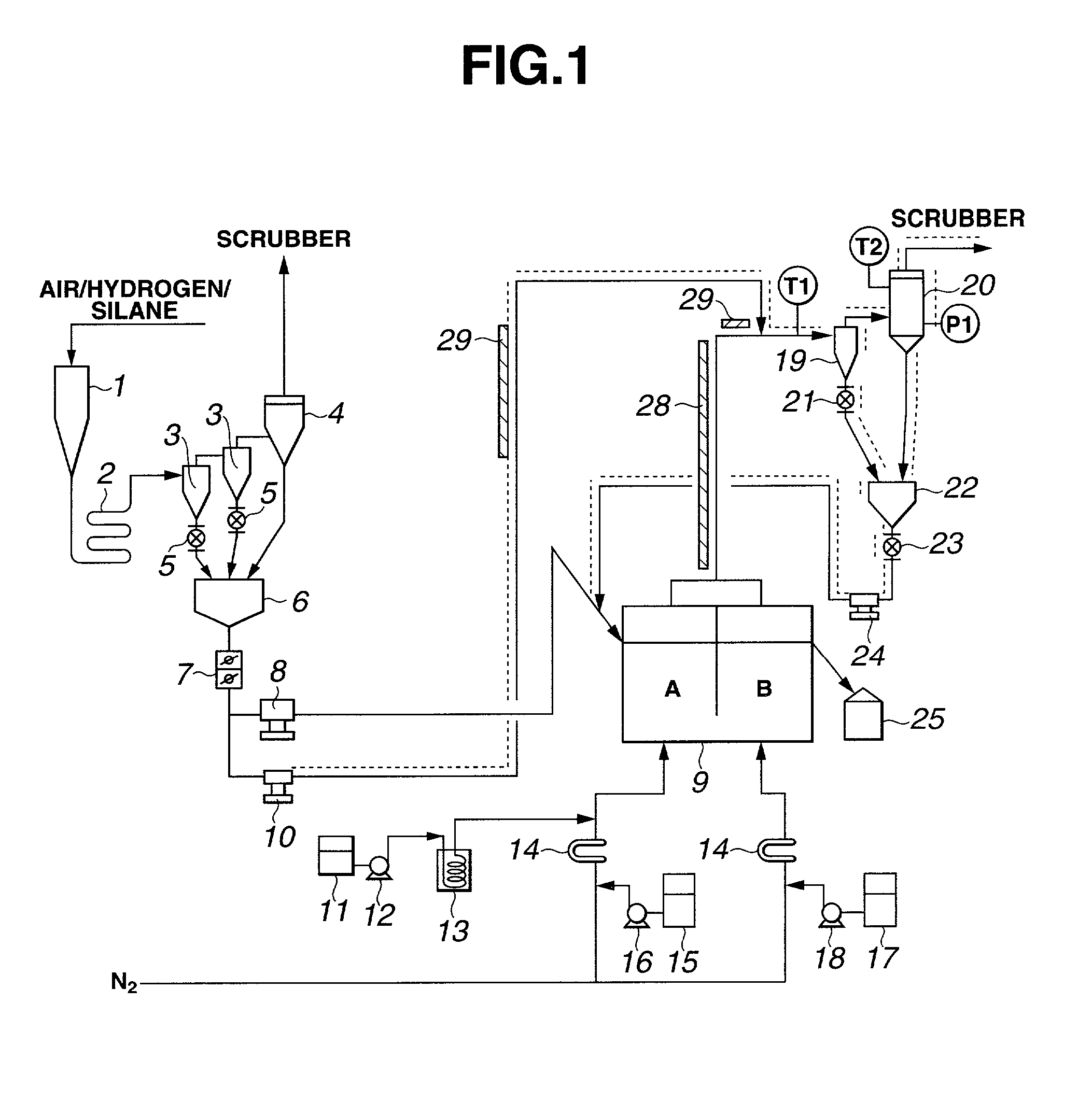Method for producing hydrophobic silica fine powder
a technology of hydrophobic silica and fine powder, which is applied in the direction of natural mineral layered products, synthetic resin layered products, and testing/measurement of semiconductor/solid-state devices, etc., can solve the problems of uneconomical process, waste gas contains a noticeable amount of unreacted silane, and the method is complex, so as to reduce the amount of unreacted hydrophobic agent in waste gas, reduce the burden of waste gas treatment, and increase the reaction efficiency of hydrophobic agen
- Summary
- Abstract
- Description
- Claims
- Application Information
AI Technical Summary
Benefits of technology
Problems solved by technology
Method used
Image
Examples
example 1
[0029] In the apparatus shown in FIG. 1, 50.6 kg / h of methyltrichlorosilane was burned together with hydrogen and air, producing 20.2 kg / h of silica. A major portion (17.2 kg / h) of the silica was fed to the fluidization vessel 9 through the diaphragm pump 8, and the remainder (3.0 kg / h) of the silica was fed to the waste gas line through the diaphragm pump 10. The former silica was subjected to hydrophobizing treatment at a nitrogen feed rate of 30 Nm.sup.3 / h, a dimethyldichlorosilane feed rate of 1.6 kg / h, and a water feed rate of 0.5 kg / h into section A of the fluidization vessel 9, and a temperature of 490.degree. C. The fluidization velocity of silica inside section A was about 2.0 cm / s. The hydrophobized silica was then deacidified at a nitrogen feed rate of 35 Nm.sup.3 / h and a water feed rate of 0.2 kg / h to section B of the fluidization vessel 9, a temperature of 480.degree. C., and a flow velocity of about 2.2 cm / s. The temperatures of the cyclone 19 and the bag filter 20 wer...
PUM
| Property | Measurement | Unit |
|---|---|---|
| Percent by mass | aaaaa | aaaaa |
| Angle | aaaaa | aaaaa |
| Temperature | aaaaa | aaaaa |
Abstract
Description
Claims
Application Information
 Login to View More
Login to View More - R&D
- Intellectual Property
- Life Sciences
- Materials
- Tech Scout
- Unparalleled Data Quality
- Higher Quality Content
- 60% Fewer Hallucinations
Browse by: Latest US Patents, China's latest patents, Technical Efficacy Thesaurus, Application Domain, Technology Topic, Popular Technical Reports.
© 2025 PatSnap. All rights reserved.Legal|Privacy policy|Modern Slavery Act Transparency Statement|Sitemap|About US| Contact US: help@patsnap.com

